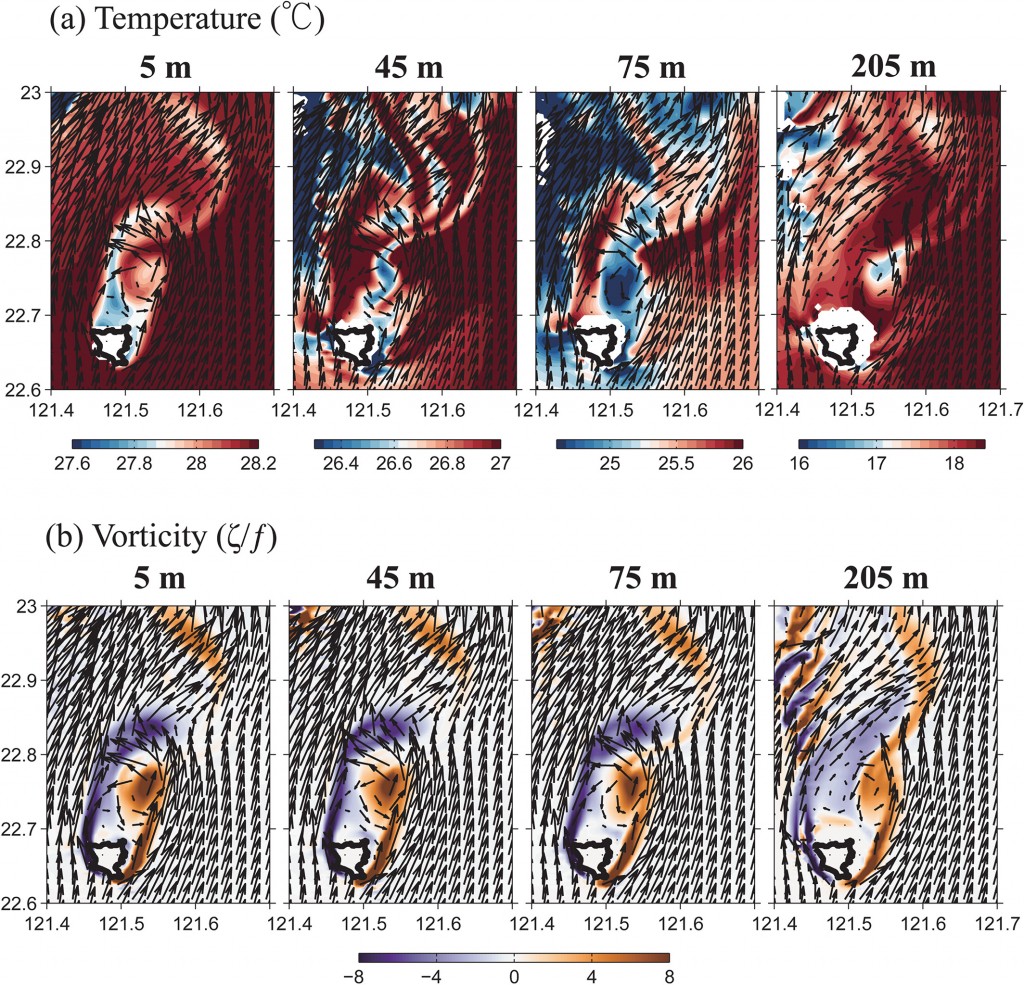Numerical study and observation reveal dynamics for island wakes in the Kuroshio
The wake features in the lee of Green Island off southeast of Taiwan are frequently observed by satellite images (Figure 1). The island acts as a stick stirring the Kuroshio water, resulting in nutrient (or other biochemical parameters) pumping and turbulent mixing. However, the physical mechanism of the Green Island wake remains to be clarified. By using MITgcm model, Chih-Lun Liu and Ming-Huei Chang successfully simulate the 3-D variability of the Green Island wake, which is validated by field observations as well. Analysis suggest the wake exhibits the alternate shedding of vortices in the near wake, containing cold water as a result of upwelling or mixing, downstream propagate, and consequently form the von Kármán vortex street in the far wake (Figure 2). Further analysis confirms the von Kármán vortex street is the dominant process in the wake. However, the vortex street features are adapted by inertial and barotropic instabilities, which act as the secondary processes. Otherwise, the model suggests the hotspot of the turbulent mixing in the wake is located at the plane free shear layer as a result of the tilting of the vertical vorticity. (Ming-Huei Chang)
Liu, C. -L. and M. -H. Chang* (2018), Numerical studies of submesoscale island wakes in the Kuroshio. Journal of Geophysical Research: Oceans, 123. https://doi.org/10.1029/2017JC013501
Download:
https://agupubs.onlinelibrary.wiley.com/doi/abs/10.1029/2017JC013501
Further reading:
https://agupubs.onlinelibrary.wiley.com/doi/abs/10.1002/jgrc.20151
Figure 1. MODIS images showing sea surface signatures off southeast of Taiwan.
Figure 2. Temperature (top) and vorticity (bottom) at 5, 45, 75 and 205 m.












